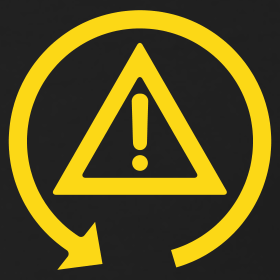Every car is different and may require specific air pressure for your tires.
This can be found on the frame of your driver’s door. This plaque will also tell you the recommended tires you should keep on your car per the manufacturer.
This usually applies to your everyday driver that probably doesn’t have custom tires or rims that would null the recommended pressure for the car.
Edit: WHY you should know! (I forgot to add thank u @_MoveSwiftly!) So keeping your tires inflated is important because a) it keeps you safe. Properly inflated tires will have better stopping power B) wear and tear on a tire is lessened and wear and tear on other aspects of your vehicle that require good balance like shocks and brakes. c) in most cases having your tires inflated to the proper psi/bar will help you hit the MPGs, horsepower and acceleration advertised for your car.
This is one of my pet peaves. I work at a fire department and I can’t tell you how many times I catch the new guy airing the tires to like a billion psi because that’s what it said on the sidewall. EVERYTHING HAS A TIRE PLACARD, the sidewall is the max for the tire, if the placard says more than the sidewall says then you have the wrong tires.
When I first started driving I inflated my mom’s tires to the number on the sidewall and I still cringe thinking about how I probably almost killed myself with an exploding tire. I got home and I asked my brother if it’s supposed to take that long to fill up and he freaked out and we let the air out and he taught me the very valuable lesson of checking the placard.
one time when I was little my brother was filling up my bike tire, I was just watching and I went to do the squeeze test when the tube exploded and smacked my hand really hard, plus the ringing in the ears, I cant imagine what a car tire would be like
Some cars also have tire pressure info on the inside of the gas cap cover, in case you can’t find it anywhere else.
It can also be located inside the glovebox on the passenger side for older vehicles.
My cars all had this info under the gas cap. With details about number of people/load/comfort/economy.
Ditto, haven’t known it anywhere else!
It isn’t always on the drivers side. It can be on the passenger side, sometimes front, sometimes rear… sometimes they put it in the glovebox - depends on the car manufacturer.
Source: used to work in tire shop.
So many people incorrectly think they should go by the number on the tire, not knowing that that number is the max that tire can hold, not the recommended pressure. Putting the max amount in prevents the tread from contacting the road flat, which will cause the middle of the tread to wear quicker than the rest. Same for too little pressure, but in this case the edges wear quicker than the middle. Using the recommended pressure for your vehicle ensures the tread is contacting the road evenly all the way across the width of the tread, and gets you the best gas mileage and treat wear.
YSAK that getting new tires doesn’t always line up with the PSI rated by the vehicle manufacturer and will have the rated PSI listed on the wall of the tire. You can also request the documentation on the tires purchased from the shop you got them from.
Edit: As rightfully pointed out in replies to this, yes the markings on the tire wall as typically the safety ratings for the tire itself and the correct PSI is a more complicated relationship between the vehicle, the size of the wheels/tires, and contact area of the tire for optimal traction and fuel economy. The vehicle placard will be a good value in most cases, except when the tire marks a max pressure lower than your vehicle’s recommendation. Always consult with the shop if you have concerns.
The pressure on the sidewall is the max for that tire, not the recommended psi. (Remember, the tire fits on many different vehicles) The tire placard on the vehicle is calculated based off the gross vehicle weight and the contact area of the tire (with the recommended size) to get the best wear and handling. If the tire placard calls for more than what is on the printed sidewall then you have the wrong tires for your vehicle, either load range or size.
Wrong load range is dangerous. Aftermarket size and you have to do the math yourself.
Tldr: Air your tires to what the placard says. Not what the sidewall says. If the tire placard says less than the psi on the sidewall is OK (preferred), above that psi means you have the wrong tires.
The pressure listed on the side of the tire is max load pressure and almost assuredly too high for the application it’ll be put in. You wouldn’t put a tire on that’s already at its limits and all. The correct answer is to ask the tire shop. Chances are if they are the same load rating and amount of plys as what they are replacing it should be the same as the door sticker.
Also if your car is German and the country you’re in is not, you may find yourself in a situation where your car is bitching about tyre pressure but the only pump you can find at a petrol station is in PSI and the label is in Bar, and the only way you can convert those is to desperately wave your phone around like a madman trying to get some working internet while freezing cold in the rain. You might be well served by doing that conversion up front and writing it down somewhere.
Totally hypothetical situation, of course.
14.5 is the number you need to remember. It’s one bar.
So 1 bar = 14.5 psi? Just to make sure!
Yep, that is correct. The boost on my old GTI Turbo was set at one bar, this is how I remember it.
I was driving the other week and my low tire pressure light went on. I opened the error page in the infotainment screen and sure enough it said “low tire pressure”.
I went to measure it and it was actually high tire pressure due to the hot weather. I let out some pressure and it went away.
So YSK that apparently cars will falsely report high tire pressure as “low” tire pressure and to always measure it before going to fill up.
Sounds like a faulty sensor
Also be aware many spare tires (those thinner ones you find in the car) have larger pressure
My Car has the same kinda tyre as a spare. Why would the spare tyre need to have larger pressure?
Depends on the car and spare. On my car the spare is a much more thin tire compared to my regular ones. It’s meant to act as a short-term fix to get a proper tire back on. This type of spare isn’t meant to be used long-term.
Since it’s a different form than a typical tire, many spares (mine included) are almost double the PSI (~60) than my typical tire.
I’d say just make sure you check on the tire itself! It’s definitely likely it’s different from the main tires for many makes and models.
Maybe different materials? Maybe because it’s thinner, the amount of air inside is different and it needs to be as bouncy as other tires
Yours wouldn’t. The low profile, low weight ones do.
You should also know that normal driving will raise the temperature and therefore the pressure of your tires. This means if you’ve been driving for a while and set your your pressure to exactly what that placard says, you’re most likely going to have low pressure the next morning. Tire pressure should be set when cold. If that’s not possible, add about 4 psi more when you’re at the pump. The next morning you can use any cheap pressure gauge to check and let some air out to correct if necessary.
My cars have always had a message saying “+0.3 bar when hot” or something, so I’ve just done it according to that.
You never get the absolute exact perfect number anyway, because temperatures vary, loads vary and speeds vary. I just like to keep it somewhere below the empty car pressure and loaded car pressure, because sometimes I’ll have passengers and loot, sometimes I won’t.
Does anybody adjust the tyre pressure due to weight in the car? Surely driving with larger weight in the boot would require a difficult psi/bar for the tyres?
Edit: great ysk post!
Only on holidays. If I pick up some furniture, I don’t bother, but when I’m driving for one or two days straight with 4 people and luggage in the car, yes definitely. It helps that I can check/adjust my tire pressure where I wash my car every two weeks. I’m really particular about the handling of my car and the tires I drive on, so I’m always on top of the correct pressure.
Could you please add a “Why YSK:”? It’s rule #2. Thank you. :)
And that’s good info you’re adding BTW.
Got it! Added an edit with a few “whys” thanks!
The second half of my comment in here is a good “why you should know” I feel like. Couldn’t figure out how to link it on mobile, but there aren’t that many comments in here so it’s easy to find.
My car’s plaque has columns with different values depending on how many people are in the car.
Does it mean people in the car while you’re airing the tires, or people usually in the car, or max people you intende to put in the car eventually?
I went to a car show today and noticed a lot of text on the frame of a Lamborghini Aventador. I wondered what that was. Now I know.
I always read about what’s printed on tires. 🤷
You should always check the vehicle because things like weight and load can change the needed PSI.
“Cold pressure”. If you’ve driven the car, as you would to go get the tire pressure checked, the tires are no longer cold and you need to add 4 lbs to the pressure listed.











